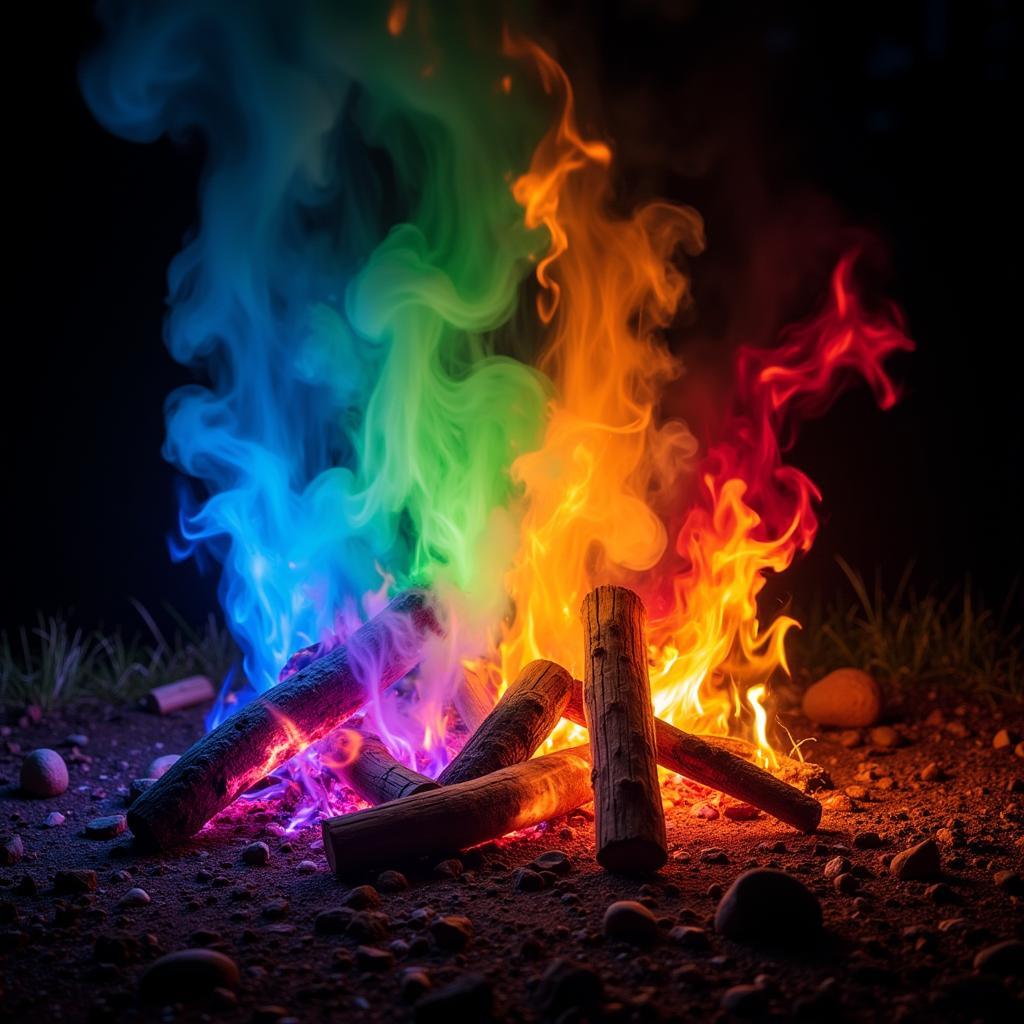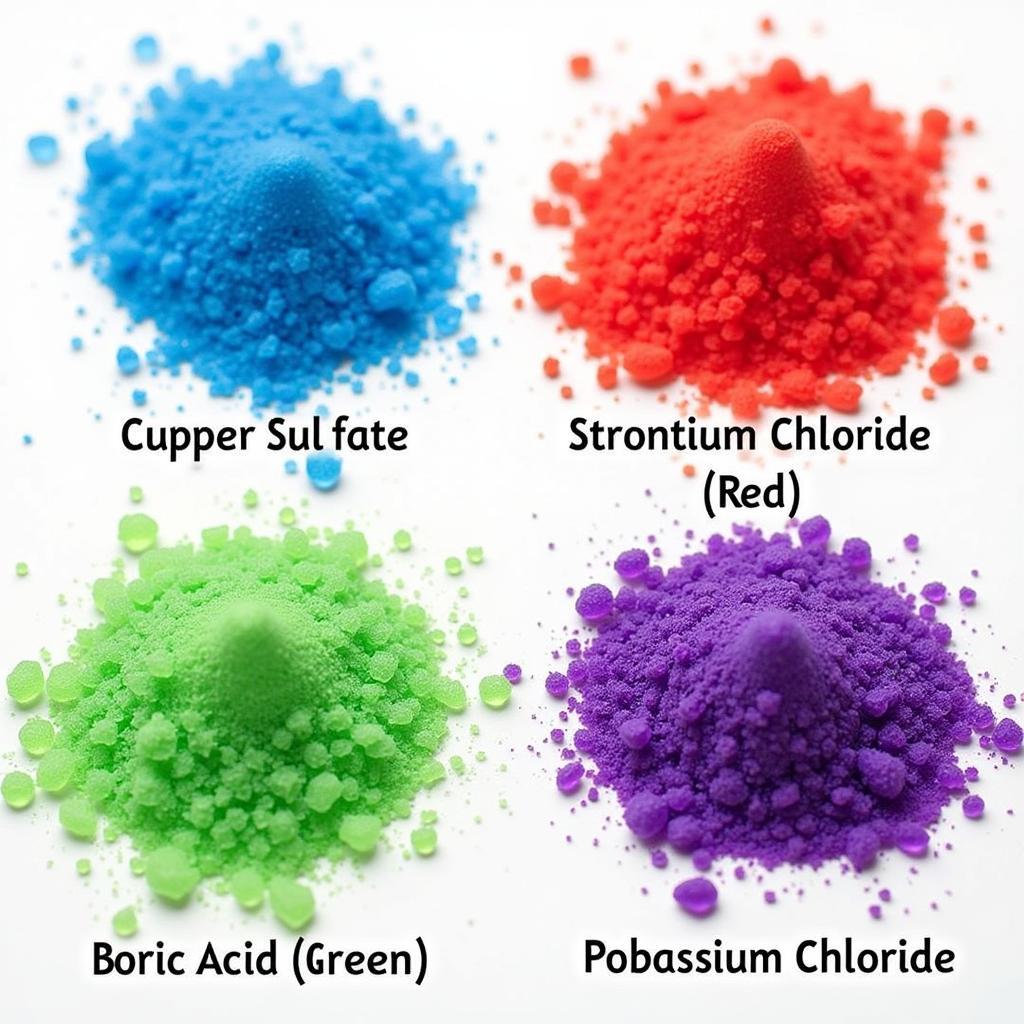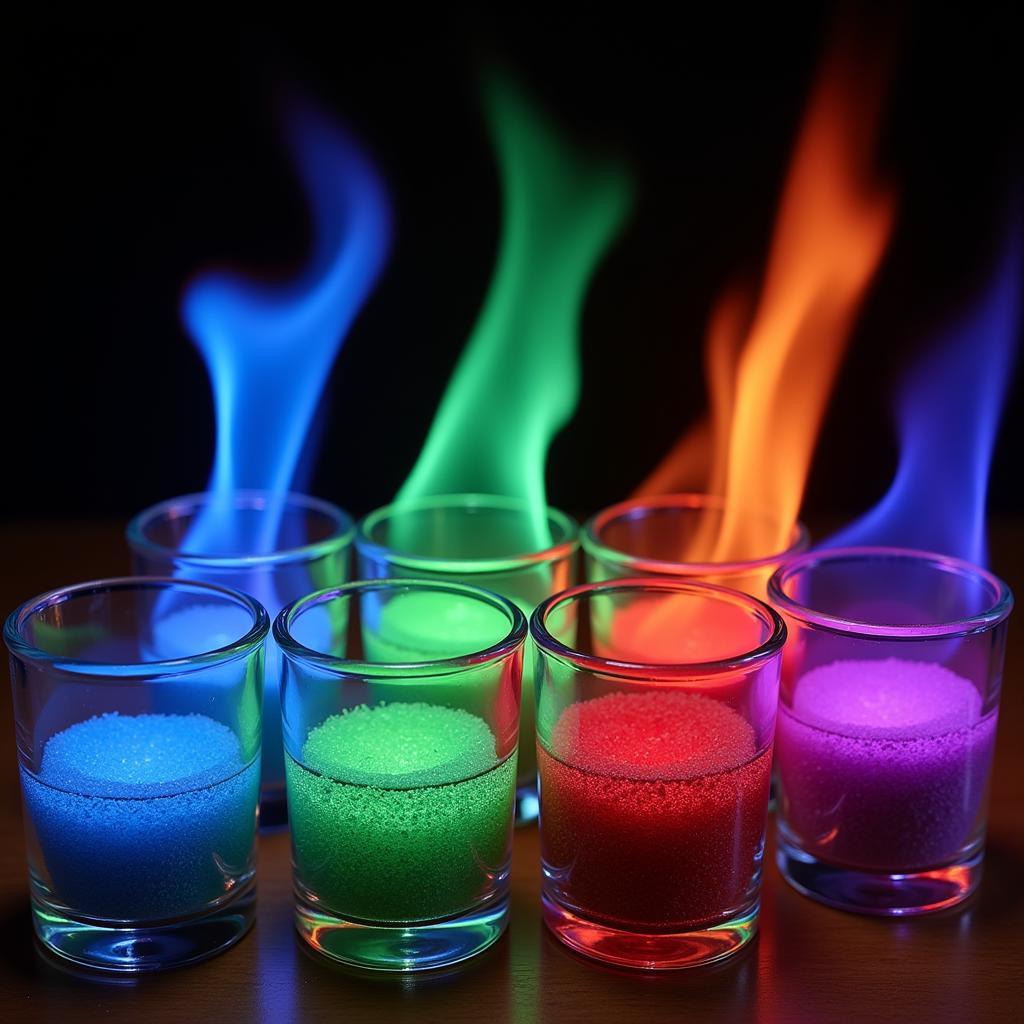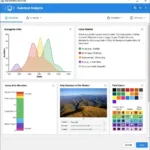Learning how to make fire turn colors is a fascinating blend of art and science. It involves understanding the chemical composition of different materials and how they react when exposed to heat. This guide will delve into the methods of creating vibrant flames, explaining the principles behind the magic and offering practical advice for safe experimentation.
 Colorful flames dancing in a campfire
Colorful flames dancing in a campfire
Understanding the Science Behind Colored Fire
The color of a flame is determined by the elements present and the temperature of the fire. Different elements emit light at specific wavelengths when heated, resulting in distinct colors. For example, sodium, a common element in table salt, produces a bright yellow flame. How do fireworks get their color? They employ this same principle, carefully mixing different metal salts to create stunning pyrotechnic displays.
Materials Needed to Change Fire Color
Want to know how to make colorful fire? You’ll need a few key materials. First, choose a fuel source, such as wood, charcoal, or a small container of denatured alcohol. Then, gather the chemicals that will create your desired colors. These are typically metal salts, readily available online or in some hardware stores. Some common examples include copper sulfate for blue, strontium chloride for red, and borax for green. Always ensure you purchase these chemicals from reputable sources. Do diamonds shine rainbow colors? Not in the same way fire does. Their brilliance arises from light refraction and dispersion, a different phenomenon altogether.
 Various metal salts used to color fire
Various metal salts used to color fire
Safety Precautions for Coloring Fire
Before you start experimenting, safety should be your top priority. Always work in a well-ventilated area, preferably outdoors, away from flammable materials. Wear safety glasses and gloves to protect your eyes and skin. Never add flammable liquids directly to an open flame. Why do different elements produce different colors? This is because each element has a unique electron configuration, which determines the specific wavelengths of light emitted when heated. Understanding this fundamental principle is key to mastering the art of colored flames.
Step-by-Step Guide: How to Make Fire Turn Colors
- Prepare your fuel source: Build a small fire or light your container of denatured alcohol. Ensure the flames are steady but not too high.
- Choose your colorant: Decide on the color you want and select the appropriate metal salt. Refer to a reliable chart or resource for accurate color associations.
- Apply the chemical: Carefully sprinkle a small amount of the metal salt onto the edge of the flames. Start with a small quantity and observe the effect. You can always add more later.
- Observe the color change: The flames should gradually begin to change color as the metal salt burns. The intensity and duration of the color will depend on the type and amount of chemical used.
- Experiment with combinations: Try mixing different metal salts to create unique color blends. However, be cautious and research compatibility before combining chemicals.
 Experiment showing different colored flames
Experiment showing different colored flames
Conclusion: Mastering the Art of Colored Fire
Knowing how to make fire turn colors opens up a world of creative possibilities, from enhancing campfires to creating unique visual effects. By understanding the science behind the process and following proper safety precautions, you can safely and effectively transform ordinary flames into a vibrant spectacle. Remember to always prioritize safety and responsible experimentation when working with fire and chemicals. What are saturated colors? Saturated colors are pure, vibrant hues at their fullest intensity. They are the opposite of muted or desaturated colors. In the context of colored fire, high concentrations of metal salts can lead to highly saturated flames.
FAQ
- Is it safe to color fire at home? Yes, as long as you follow proper safety precautions. Always work in a well-ventilated area, wear safety gear, and use chemicals responsibly.
- Where can I buy metal salts for coloring fire? Metal salts are available online or from some hardware stores. Ensure you purchase from a reputable supplier.
- Can I use any type of fuel source? Wood, charcoal, and denatured alcohol are common choices. Avoid using flammable liquids like gasoline.
- What if the color doesn’t change? Make sure you are using the correct chemical and that the fire is hot enough. Start with a small amount and gradually add more.
- Can I mix different metal salts? Yes, but research compatibility before combining chemicals to avoid potentially dangerous reactions.
- What are some other ways to create colored flames? Certain types of wood and pinecones can naturally produce colored flames due to the presence of specific chemicals.
- Are there any regulations on using colored flames? Check local regulations regarding open fires and the use of certain chemicals.
Common Scenarios & Questions
- Birthday parties: How can I safely create colored flames for a birthday cake?
- Campfires: What are the best chemicals for creating colorful campfires?
- Science projects: How can I demonstrate the different colors produced by various elements?
Further Reading
- How to make colorful fire
- How do fireworks get their color
- Why do different elements produce different colors
- Do diamonds shine rainbow colors
- What are saturated colors
Need help with your color project? Contact us! Phone: 0373298888, Email: [email protected]. Visit us at 86 Cầu Giấy, Hà Nội. Our customer service team is available 24/7.
